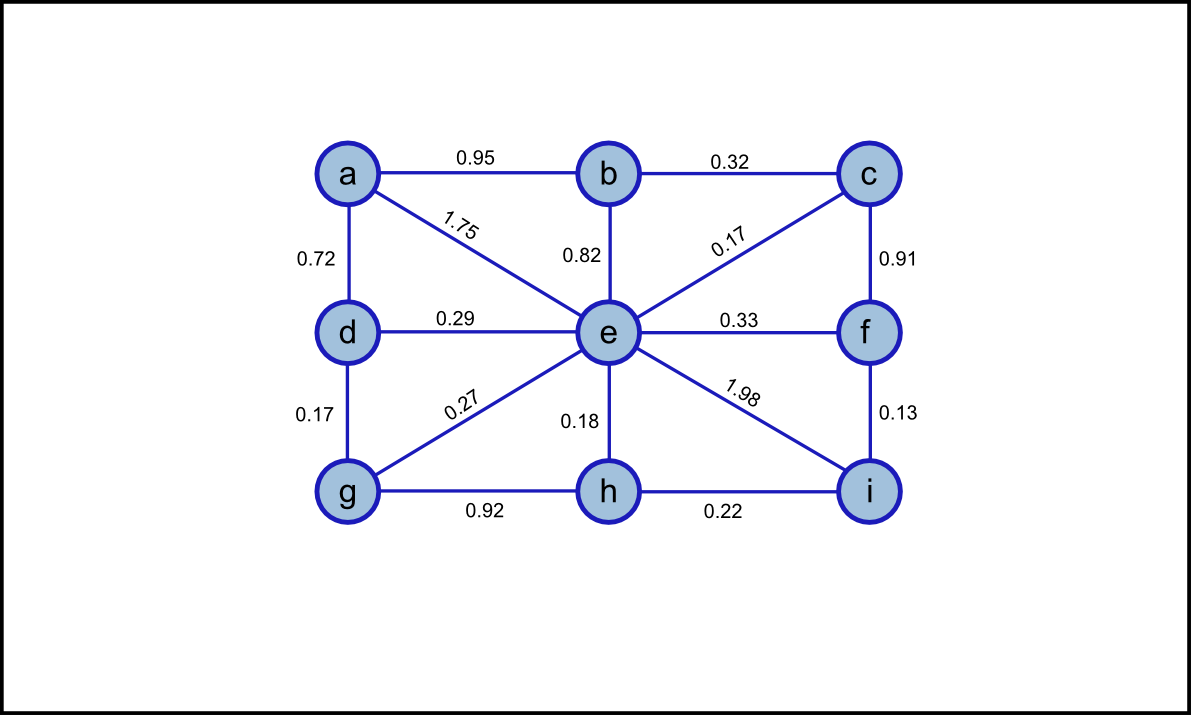Dijkstra Shortest Path C Program
Dijkstra's algorithm is a graph search algorithm which is used to find the shortest path from each vertex to every other vertices in the given directed graph. Input graph: +---------------------------->-----------------------------+ 4 +----- 1 --------------------------------- 4--------^-----------+ 6 +------------------------->-------------------+ Step 1: Construct the adjacency matrices that displays the cost of the edges and path between vertices. 1 2 3 4 1 ~ ~ 9 4 - - 13 14 2 5 ~ ~ ~ 21 - - - 3 10 6 ~ 8 31 32 - 34 4 ~ 7 ~ ~ - 42 - - Left matrix(Cost) shows the cost of the edges and the right matrix(Path) shows the path between vertices. Notations: '~' - represent no direct path. EdgeCost(X-Y-Z) - indicates the sum of cost of the edges XY and YZ. Cost[X][Y] - indicates the cost of the edge XY.

The cost of edge 1-3 is 9. So, the cost value is placed at the 1st row, 3rd column of Cost matrix and the corresponding edge information (13) is placed at the same location in Path matrix.

Finding the shortest path, with a little help from Dijkstra! If you spend enough time reading about programming or computer science, there’s a good chance that you. Here you will learn about dijkstra's algorithm in C and also get program. Dijkstra algorithm is also called single source shortest path. Dijkstra's algorithm in C.
Similarly, we need to update other entries. Step 2: Consider Vertex 1 from the given input graph. There is an indirect path from 2 to 3 via 1. So, calculate the path cost and update adjacency matrices.
Cost[2] [3] = edgeCost(2-1) + edgeCost(1-3) = 5 + 9 = 14 Similarly, find all possible indirect paths, calculate path cost and update adjacency matrices. Fiberracingbigtrackpack V1.0 To Rfactor.7z. Indirect path available from 2 to 4 via 1. Cost[2] [4] = edgeCost(2-1) + edgeCost(1-4) = 5 + 4 = 9 Indirect path available from 3 to 3 via 1. Cost[3] [3] = edgeCost(3-1) + edgeCost(1-3) = 10 + 9 = 19 Indirect path available from 3 to 4 via 1.
Cost[3] [4] = edgeCost(3-1) + edgeCost(1-3) = 10 + 4 = 14 Even though left matrix has the cost for the edge 3-4, we still calculate the edge cost of the indirect path in order to check whether calculated cost is smaller than the existing one. If so, update the adjacency matrices with the smaller one. In this case, calculated cost 14 is greater than the existing cost 8 for the edge 3-4. So, we don't need to update the adjacency matrices for this case. 1 2 3 4 1 ~ ~ 9 4 - - 13 14 2 5 ~ 14 9 21 - 213 214 3 10 6 19 8 31 32 313 34 4 ~ 7 ~ ~ - 42 - - Step 3: Consider vertex 2 from the input graph. Cost[3][3] = edgeCost(3-2) + edgeCost(2-1-3) = 6 + 14 = 20 (Rejected - Existing Value(19).